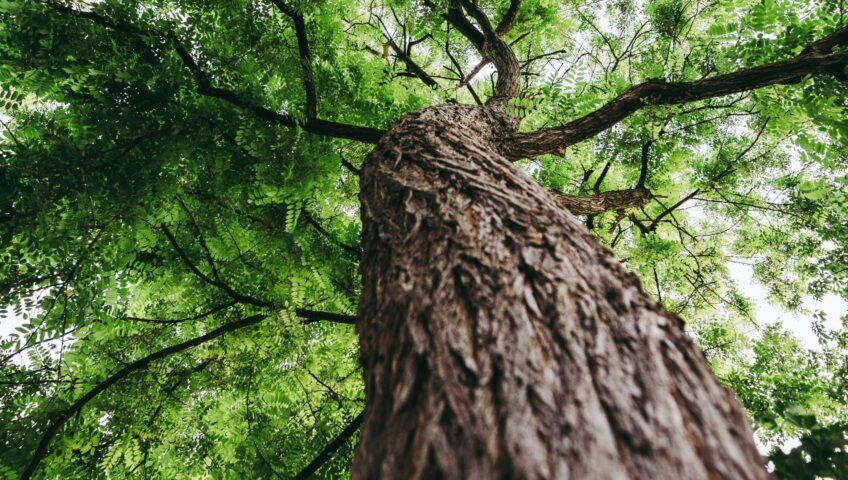We love our trees. Whether you’ve got one mighty oak in your front yard or a stand of silver maples overlooking your back deck, trees are a valuable part of our landscapes, offering shade, beauty, and even environmental benefits. However, there are times when tree removal becomes necessary.
While it’s always a choice of last resort, removing a tree might be the one viable option to protect your property and ensure safety. This can be preventative–or, unfortunately, done as a response to disaster.
In this article, we’ll explore the common scenarios where tree removal is essential and why taking action sooner rather than later can save you from bigger problems down the road.
1. Sick or Dying Trees
One of the most common reasons for tree removal is disease, plain and simple. Trees, like any living organism, are susceptible to various illnesses.
Signs of a sick tree can include discolored or brittle leaves, dead branches, fungal growth, or the presence of pests. If a tree is sick and not responding to treatment, it can pose a serious risk. A dying tree is more likely to fall, potentially causing damage to your property or even endangering lives.
In some cases, the disease can spread to other trees or plants, making removal necessary to prevent a larger outbreak. Early detection and removal of a sick tree can protect the health of your entire landscape.
2. Trees That Uproot Sidewalks and Hardscapes
As trees grow, their roots spread out in search of water and nutrients. Sometimes, these roots can become so strong that they start to lift and crack sidewalks, driveways, and other hardscapes. This not only creates an unsightly appearance but also poses a tripping hazard for anyone walking on your property.
In city and suburban settings, where space is limited, tree roots can easily conflict with the surrounding infrastructure. If a tree’s roots are causing significant damage to walkways or other structures, removal may be necessary to prevent further damage and reduce the risk of injury.
3. Trees Causing Foundation Problems for Your Home
Tree roots are persistent and can grow under and around structures, including the foundation of your home.
Over time, these roots can cause cracks in the foundation, leading to costly repairs. In extreme cases, the roots can even destabilize the foundation, putting your entire home at risk.
If you notice cracks in your foundation or other signs of structural damage and suspect that a nearby tree might be the culprit, it’s important to consult with a professional. Removing the tree before the problem worsens can save you from much larger, more expensive repairs down the line.
4. Trees Disrupting Sewer Lines
Another common issue caused by tree roots is the disruption of underground sewer lines. Tree roots are naturally drawn to the moisture found in sewer lines, and over time, they can infiltrate and block these pipes. This can lead to sewage backups, slow drains, and unpleasant odors around your home.
If a tree is found to be disrupting your sewer system, removal might be the best solution to prevent ongoing plumbing issues. In some cases, removing the tree and replacing the damaged section of pipe can restore your sewer system’s functionality and prevent future problems.
5. Trees Damaged by Severe Storms
Northeast Ohio is no stranger to severe weather, from heavy snow and ice storms in the winter to strong winds and thunderstorms in the summer. The August 2024 tornadoes will be talked about for years to come. Unfortunately, these weather events can take a toll on trees, leaving them broken, weakened, or even uprooted.
A tree that has sustained severe storm damage may no longer be structurally sound. Large branches or the entire tree itself could fall unexpectedly, posing a significant risk to nearby structures, vehicles, or people.
If a tree on your property has been seriously damaged by a storm, it’s crucial to have it assessed by a professional. In many cases, removal will be necessary to eliminate the danger.
6. Trees Too Close to Important Structures
While trees can enhance the beauty of your property, they can also pose risks when planted too close to important structures. Over time, even a healthy tree can become a problem if it grows too close to your home, garage, or other buildings. The branches might hang over the roof, creating a risk of damage during storms or shedding leaves and debris into your gutters.
Additionally, a tree that’s too close to your home can cause shading issues, leading to damp conditions that promote mold growth or attract pests. In these situations, removing the tree might be the best course of action to protect your home and maintain its value.
When Removal Is the Right Choice
While the decision to remove a tree is never easy, there are times when it’s the most responsible option. Whether due to disease, structural interference, or storm damage, the risks posed by a problematic tree can outweigh the benefits of keeping it. By recognizing the signs that a tree needs to be removed, you can take action to protect your property, ensure safety, and prevent costly damage.
If you’re unsure about the condition of a tree on your property or need advice on whether removal is necessary, it’s always a good idea to consult with a professional arborist. They can assess the situation and provide guidance on the best course of action, ensuring that your landscape remains safe, beautiful, and healthy.

